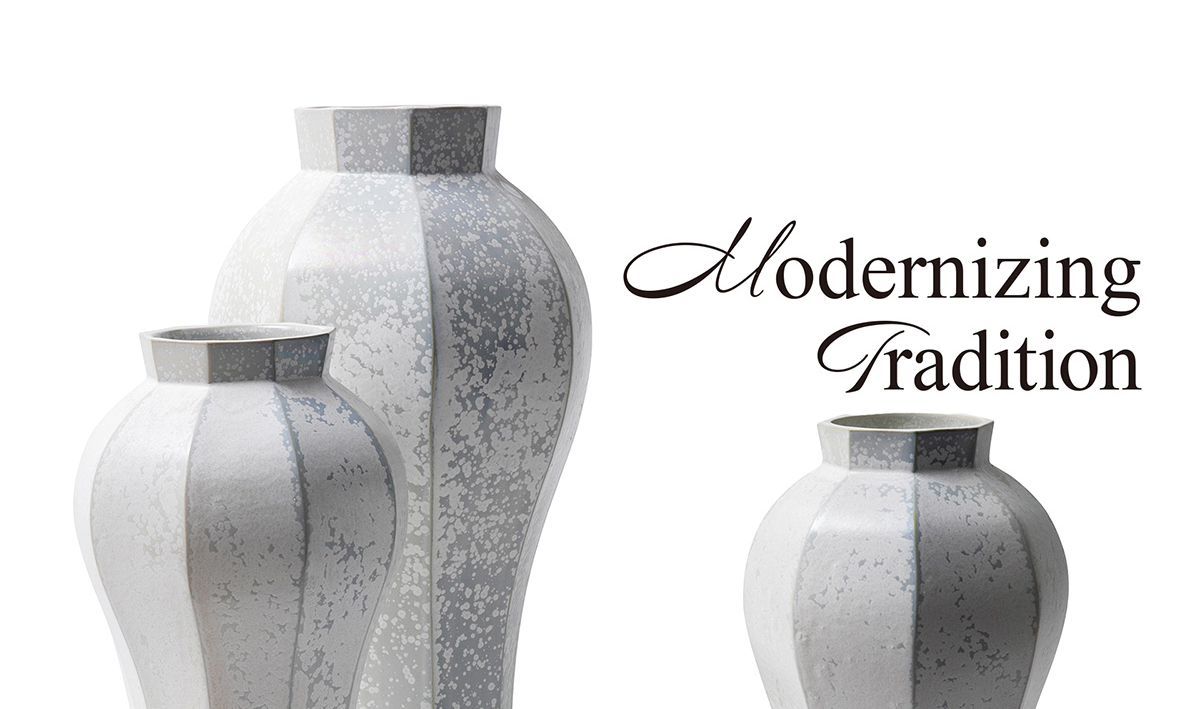
Art+Future
- Writer.Sung Ji Yeon
- Photos courtesy of.Yoon Sang-hyun
Familiar yet refreshingly new, traditional yet trendy―this is how Yoon Sang-hyun’s ceramics are often described by those who view them. The forms echo familiar shapes from Korean pottery, yet they are sharpened with lines that evoke an unfamiliar edge. The clear, polished surfaces radiate tranquility, while the glaze, sparkling like scattered stars, offers a powerful sensory experience. Through Yoon’s skilled hands, past and future merge seamlessly, connecting tradition with modernity.
Yoon Sang-hyun
Q. Could you share your journey with ceramics?
I first encountered ceramics by joining a pottery club in high school. Though it was a chance encounter, I soon found myself so immersed in the craft that I would lie awake at night envisioning my next project. This naturally led me to pursue ceramics in college, and later, to earn a doctorate in order to establish a deeper artistic philosophy. Today, I present a variety of works through domestic and international exhibitions and solo shows, while also mentoring the next generation of artists as a visiting professor at a university.

Q. Please introduce some of your signature series.
First, my “Moon Jar” series is perhaps my most iconic, reflecting my 30-year journey in ceramics. In this series, I combine traditional moon jar forms with crystalline glazes, uniting tradition and modernity in a single piece. The crystalline glaze, which produces natural crystal formations reminiscent of snowflakes or crystals, has become my signature.
The second series includes wheel-thrown works named “freewheeling” series. Multiple curves, each with a different center point, shape the exterior of the vessels, creating works that exude a sense of rhythm. The crystalline glaze adds an element of elegance and brilliance, enhancing the overall visual impact. Through these two series, I aim to blur the boundaries between craft, design and fine art.
Q. You primarily focus on the form of vessels. Why?
Initially, my work centered on “exploring functionality,” emphasizing the practical aspects of vessels. Between 2000 and 2019, I ventured beyond these confines, experimenting with vessels and three-dimensional objects to uncover the “sculptural potential” within ceramics. During this period, I explored everything from architectural ceramics to lifestyle crafts. This exploration ultimately led me to appreciate the inherent “beauty of vessels themselves.” I came to realize that vessels radiate a particular strength through their form, and there is a distinctive aura emanating from the glaze―one that fosters an almost magnetic connection between the piece, the space it inhabits, and the individuals who encounter it. Now, I am committed to showcasing the powerful presence a single piece can create within a space.

Q. Have you intentionally borrowed elements from tradition?
Yes, indeed. A significant portion of my work is inspired by traditional elements. This includes not only the forms but also the attitude embedded in ceramics―such as the approach of stripping away unnecessary details to achieve simplicity.
But I don’t stop there; “modernizing tradition” is at the heart of my work. With today’s quality of clay and tools being vastly improved, I believe I can use traditional forms with modern techniques and materials to add a sense of “trendiness.”
Q. Crystalline glaze seems to add a trendy element to your work. Isn’t it challenging to work with?
Absolutely. Crystalline glaze is a delicate material, highly sensitive to firing conditions and techniques―so much so that even pieces in the same kiln can come out entirely unique. While many artists use crystalline glaze, the glaze in my work takes on a unique starry effect, like a cascade of stardust, which adds a distinct character.
I’ve invested substantial effort into developing crystalline glaze to reflect the colors I envision and to make it one of my strengths. Developing glazes feels like a calling for a ceramic artist, something I’ve been dedicated to since my undergraduate years. Over time, with accumulated experience, I’ve learned to skillfully navigate the glaze’s diverse spectrum, selecting tones and effects that resonate with my own artistic sensibilities.

Q. What do you value most in your work?
For me, it’s about whether or not a piece embodies a distinct sensibility and philosophy. I believe I am creating work based on the aesthetics I most cherish, while staying aligned with the spirit of the present era.
Q. How do you hope your work resonates with others?
I hope that audiences feel the vitality of nature when they view my work. I also wish for my work to evoke personal memories in those who encounter them. If that happens, the experience will transcend simply appreciating the work’s inherent charm, offering a “distinctly aesthetic experience.”
Q. What are your personal ambitions?
As the world changes rapidly, the trends in crafts are also evolving at an accelerated pace. I aim to walk my own path with unwavering determination, without being swayed by these changes.

Yoon Sang-hyun





